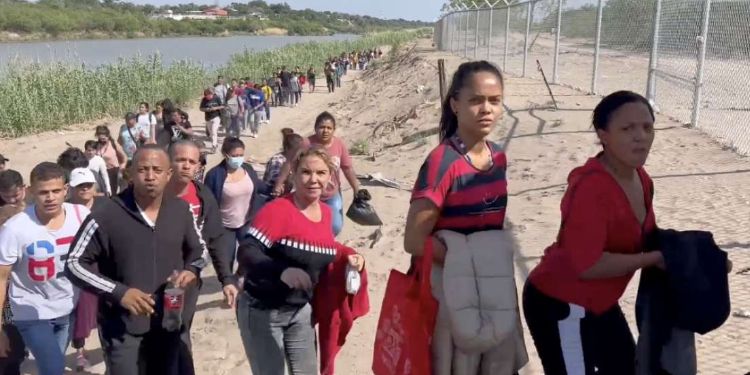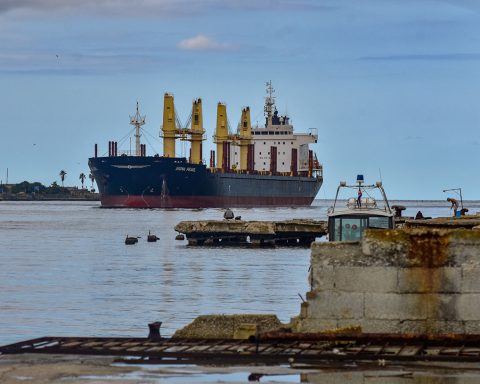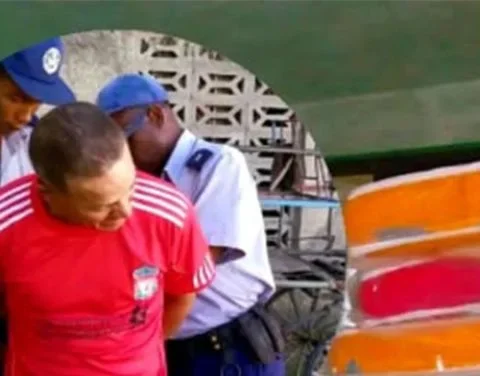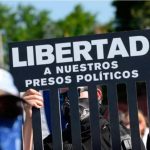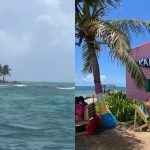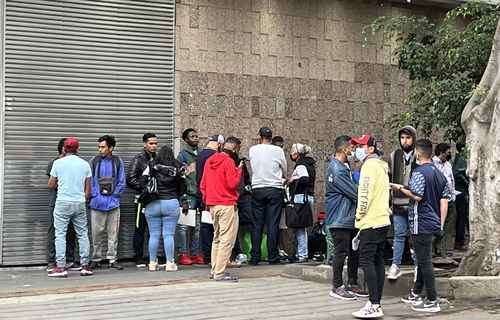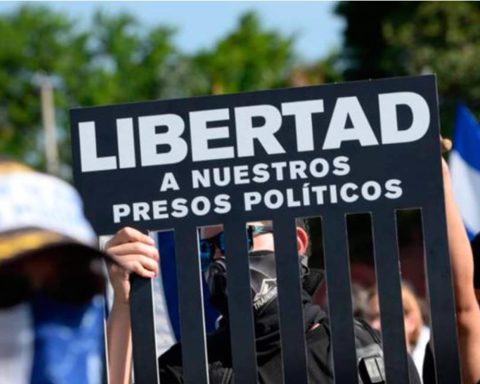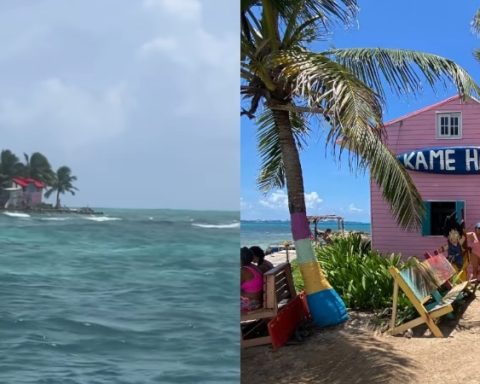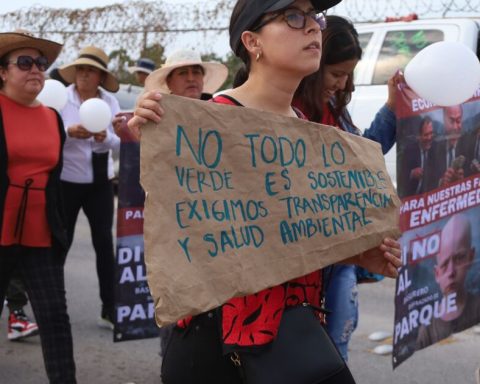CDMX, Mexico. –El Confidencial de España, one of the investigative media in that country, published a report on the biggest migratory crisis in Cuba and the different migration routes used by Cubans in an effort to leave the island.
The text explains how Cuban migration has understood (and suffered) the risks experienced by migrants trying to reach the United States, fleeing their countries due to the economic crisis, the lack of opportunities, and freedom, as is the case of the island.
People who arrive from Cuba to Nicaragua not only have to travel the more than 3,000 kilometers that separate the Ortegista dictator from the United States, but also a road full of drug cartels, organized crime, and police arrests. They also suffer extortion from the authorities of the Latin American countries that they have to cross, says the report prepared by Alfredo Herrera Sánchez.
The report of El Confidencial titled “An island on the run: ‘It’s like living in a movie about drug dealers and traffickers” narrates the journey of Sayris Morales Leal, 26 years old, and a graduate in Journalism.
“Leaving Cuba was not a last-minute decision,” says Sayris, “although I have to admit that the situation in the country was an important factor. I had it decided at least eight years ago. The problem is that I didn’t have the resources or the way to make that dream come true”.
Sayri made part of her trip in a trailer with other Cubans. He assures that at first he hesitated but that the coyotes, as people traffickers are colloquially called in Mexico, gave him no other option. “Everyone will go there, and if they don’t want to, they stay! They yelled at us… and although we didn’t like the idea of the trailer, we had to get on it. About 45 minutes into the trip we heard a very loud noise and a smell of gasoline that we did not understand what it was. Then, about an hour and a half or two, the trailer stopped. They told us that it had broken and that we would soon continue in another one, ”he told El Confidencial.
The current migratory boom is conditioned by a maneuver by Havana, the report says. “On November 22, 2021, the Government of Nicaragua announced that it was suspending the visa requirement for Cubans to enter its territory.” This caused thousands of people to decide to leave the largest of the Antilles at the end of 2020. A figure that has not stopped growing as shown by the numbers from the authorities Mexican published by Cubanet. At the same time, the protests on the island have also increased.
According to the Spanish media, “the Cuban authorities have dealt with these crises by opening borders so that everyone who is not comfortable can leave.” He also recalls that the strategy was practiced in “1965, through the port of Boca de Camarioca (5,000 Cubans)” and in 1980, with the Mariel exodus (125,000)”.
Spain as a destination
The report also echoes the Cuban migrants who by various means, but especially Russia, arrive in Spain with the dream of being legalized and being able to restart their lives.
To do this, they interview a man who assures that he decided to emigrate due to the “impact of the Ordering Task (financial reform), initiated by the communist government in January 2021.”
“I earned 300 CUC a month in a small private company and the Ordinance screwed me over. Inflation began and purchasing power decreased, in addition everything was bought in currency, a currency that neither I nor anyone else earns in Cuba,” says the young man whom the site identifies with the name of Gonzalo.
Cuba received between 2010 and 2021, 8,059 Spanish visas. According to the data compiled by the newspaper, 1,230 were for studies. The beneficiaries of the latter generally “are young university graduates who usually pay for private schools to manage a way out to Europe. In October 2020, a large part of the staff of the Spanish Embassy in Havana was replaced. From then on, study visas began to be denied en masse, even though the applicants presented all the necessary requirements,” says El Confidencial. Another escape route that is closing.
the rafters
The Spanish newspaper, famous for unveiling Gerard Piqué’s business with the Saudi dictatorshipalso echoes one of the most dangerous ways to travel from Cuba to Florida: the homemade rafts they build for leave the island illegally.
“On November 16 and 19, there were two shipwrecks of Cuban rafters in the Florida Straits. Six died, 20 were missing and only ten survived. Fatalities are virtually impossible to quantify because most bodies are not recovered.”
Currently, the United States government returns a large part of the detained rafters to Cuba. For its part, the island’s dictatorship along with its propaganda apparatus and influence groups continue to blame the United States for this type of migration; even though the former president Barack Obama eliminated politics known as “dry feet, wet feet”. After this announcement, the number of Cuban rafters intercepted at sea decreased drastically until the current crisis arrived, which has been accompanied by repression of those who dare to dissent or protest.
Mexican organized crime controls the route
According to the report, the easiest part of migrating by land is getting to Nicaragua. When you arrive in Honduras, the dangers and challenges begin, in Nicaragua it’s just paying the authorities for letting you pass.
“It’s crazy because you arrive and get off the bus, some Fast and Furious movie type cars pick you up that you don’t even know where they came from. They (the coyotes) tell you a code to pick you up. Those cars go at terrifying speed and pass you from one to the other in succession. This part of the journey has a very meticulous coordination. Everything is ready, there is no waiting, just get off one thing and get on another. It’s shocking because you’re not used to any of that. It’s like being in a movie about drug traffickers, about traffickers. An action film doesn’t even come close to reality because of the adrenaline rush, the experience of fear. You are always praying that the police don’t catch you because not all shifts can be paid for, they are only those that have agreements with the coyotes,” the journalism graduate told El Confidencial.
Arriving in Mexico, everything gets complicated. The Central American coyotes have to abide by the orders and structures of the Mexican drug cartels.
“There the coyotes do business not with the police but with the cartels,” explains the Cuban journalist. In Mexico the coyotes don’t even rule, the cartels have the last word. Mexico is very big, it’s like crossing those three countries that you went through (Nicaragua, Honduras and Guatemala), two or three more times. There it is not like the other countries where the police are and the migra. In Mexico there is the police, the army, the prosecutor’s office, migration… The security forces are much larger, so there are greater chances of being arrested. In addition, from there there is return (deportation) to Cuba”.
Sayri was detained in Mexico and transferred to Tapachula. After obtaining her release, he returned to the United States. She finally managed to cross the Rio Grande.
“When the time came to cross the Rio Grande I did not give up. At first the water was up to my waist, but as it progressed, it covered me. I couldn’t swim either because there was a current. What I did was put up with a boy to be able to continue. When I crossed, I changed my clothes, called the family, and we looked for the border patrol to process us.”
The report from El Confidencial indicates that the Cuban woman took 51 days to reach the United States and spent 9,000 dollars. She assures that she only wants to “live, I want to live, not survive. In Cuba, the Government has a motto that says: to resist is to win, but until when do we have to resist and at what cost?…No one should live resisting”.
Receive information from CubaNet on your cell phone through WhatsApp. Send us a message with the word “CUBA” on the phone +525545038831, You can also subscribe to our electronic newsletter by giving click here.
